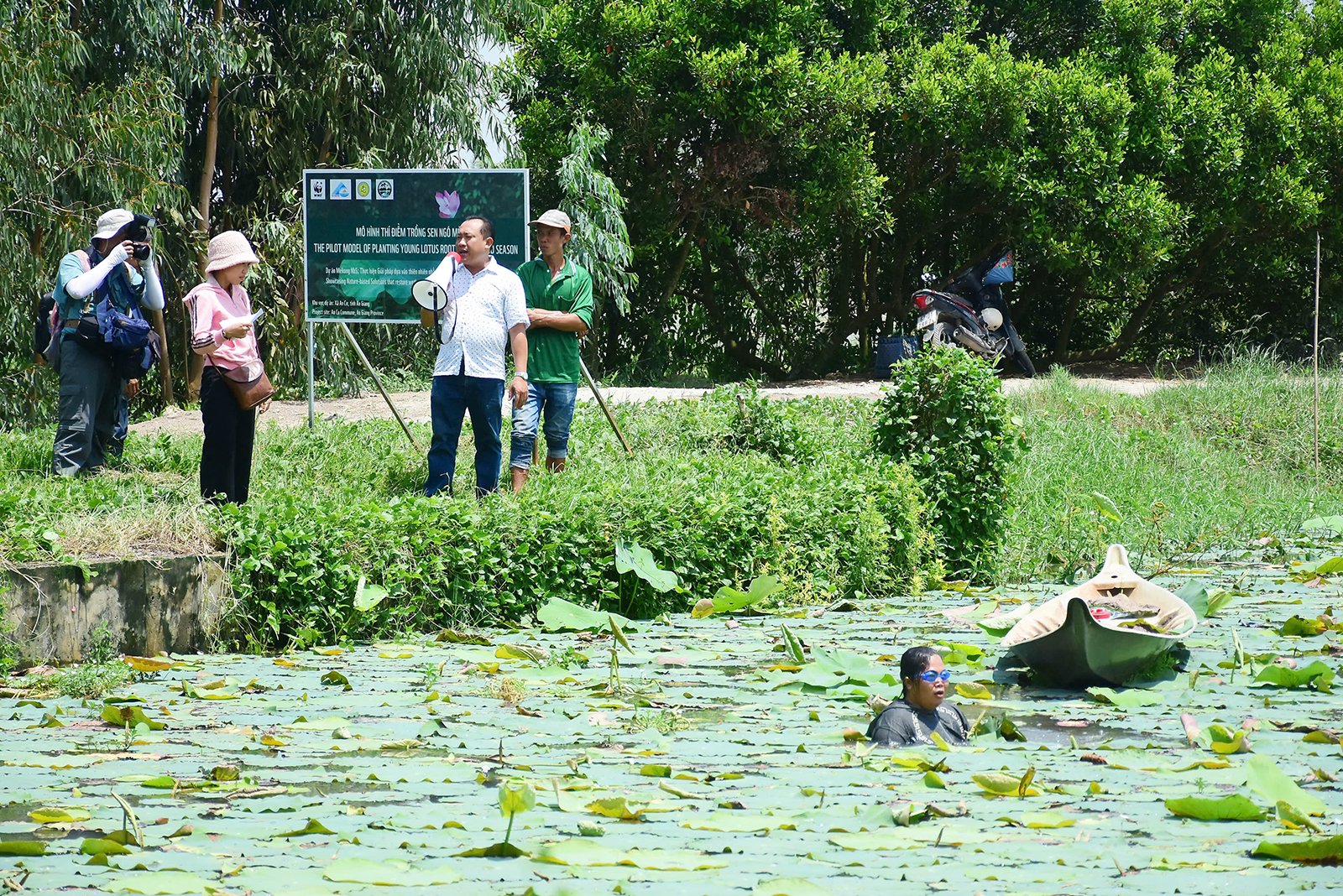
The Institute of Climate Change - An Giang University in collaboration with WWF Vietnam organized a tour of flood-based livelihood models in An Cu commune. Photo: THANH TIEN
Specific goals
As an upstream province of the Mekong Delta, An Giang has a clear level of impact from annual floods, so WWF Vietnam's flood-based livelihood models are very suitable for practical application. Ms. Luu Thi Lan - Mekong NbS Project Manager, WWF Vietnam informed: "The Mekong NbS project will be implemented in the period 2023 - 2025, with nature-based solutions to restore wetlands in the Mekong Delta. In addition to natural solutions in the core area of Tra Su Melaleuca forest such as afforestation and nurturing poor forests, we also choose to implement flood-based livelihood models in the Melaleuca forest buffer zone".
According to Ms. Luu Thi Lan, livelihood models during flood season also help accumulate alluvium, increase soil fertility, wash away pathogens, indirectly increase groundwater accumulation and prevent subsidence in the delta. These models are being implemented in areas with two rice crops per year, and can be applied to areas with three crops per year, so they will be in harmony with the flood discharge plan of An Giang province.
Currently, livelihood models based on flood season are mainly implemented in An Cu commune, associated with farmers with production land in the buffer zone of Tra Su cajuput forest, including: Model of raising tilapia and catfish in pens in Van Tra hamlet; model of flood-tolerant rice combined with natural fish storage in Vinh Ha hamlet; model of growing lotus shoots during flood season in Vinh Dong hamlet; model of natural fish storage, tourism and processing of dried fish meeting OCOP standards in Vinh Dong hamlet...
“We implement the model on the principle that the local government recommends a minimum location of 20 hectares managed by a group of farmers, and WWF Vietnam conducts a survey of suitable geographical locations. Farmers discuss with experts to proactively select models. When implementing, the project supports 50% of the cost of implementing the model, including materials, seeds, feed, and nets. On the farmers' side, 50% of the cost of auxiliary materials, Melaleuca poles, and labor will be covered. Currently, the models are developing well and showing initial effectiveness, affirming their adaptability when applied during the flood season in An Giang,” Ms. Luu Thi Lan added.
Actual results
In order to evaluate the effectiveness of the models, the Institute of Climate Change - An Giang University also coordinated with WWF Vietnam to organize a tour of flood-based livelihood models in An Cu commune. Most farmers assessed that the model was quite suitable for local soil conditions and did not have many difficulties in implementation.
Mr. Huynh Tan Ngoi - who applied the model of raising perch and catfish in cages in Van Tra hamlet said: "When participating in this model, we received financial support from WWF Vietnam and technical support from experts, so we are very confident in implementing it. Currently, the fish are growing well, so the farmers in the group are all excited. We hope that the fish will be in season when the fish are harvested so that farmers will have the motivation to expand the model in the following years."
According to Mr. Huynh Tan Ngoi, the fish farming group was supported by WWF Vietnam with 300kg of pure yellow catfish and 100kg of perch on a 50ha farming area. The expected output by the end of the harvest season will reach 3 tons of pure yellow catfish, 1.5 tons of perch and 1.5 tons of white fish that were lured into the model during the farming process. This will be a good source of income, helping farmers have a better livelihood than "waiting" for the flood to recede every year.
Also participating in the flood-based livelihood model supported by WWF Vietnam, Mr. Nguyen Tan Tai - a member of the Tai Phat Cooperative Group, An Cu commune, said: “I and neighboring farmers will participate in the natural fish storage model combined with tourism activities and processing dried fish according to OCOP standards from 2024, with an area of 50 hectares and more catfish. At the end of the season, I harvested nearly 1 ton of catfish and 4 tons of natural fish, so the income is quite good. During the flood season, I combined eco-tourism services, welcoming more than a dozen groups of tourists from other provinces to experience, so my income increased significantly. This year, I continue to participate in the model and expand the area to 80 hectares. The cooperative will develop some more countryside experience services to better meet the needs of tourists,” Mr. Tai shared.
Not only supporting farmers in raising freshwater fish during the flood season, WWF Vietnam and the Institute of Climate Change - An Giang University connect with businesses and traders to buy freshwater fish. This activity helps farmers have an outlet, while businesses and fish sauce processing facilities in Chau Doc ward have a stable source of raw materials with safe quality.
The locality also actively cooperates to make the models highly effective. Chairman of the An Cu Commune Farmers' Association, Ngo Van Cuong, informed: "The flood season livelihood models have been and are promoting positive effects on farmers' lives. The Commune Farmers' Association will continue to coordinate with organizations and units to expand these livelihood models to improve farmers' lives in the following flood seasons."
THANH TIEN
Source: https://baoangiang.com.vn/sinh-ke-tu-lu-a463244.html



![[Photo] Prime Minister Pham Minh Chinh chairs a meeting of the Government Standing Committee to remove obstacles for projects.](https://vphoto.vietnam.vn/thumb/1200x675/vietnam/resource/IMAGE/2025/10/06/1759768638313_dsc-9023-jpg.webp)




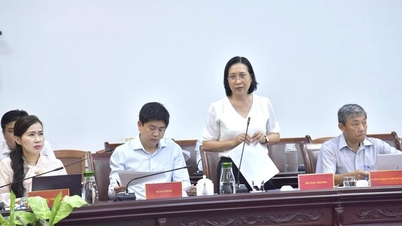





















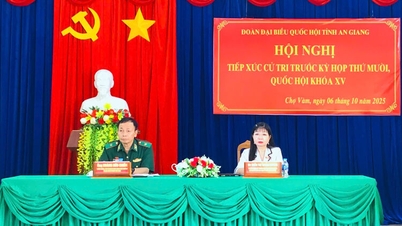
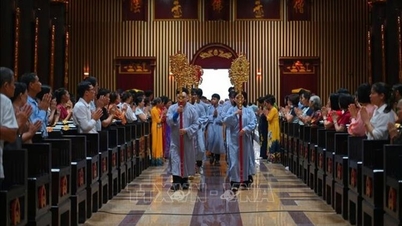
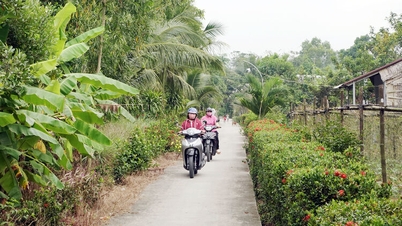
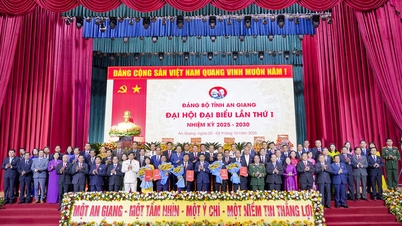
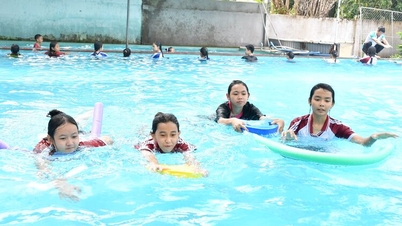
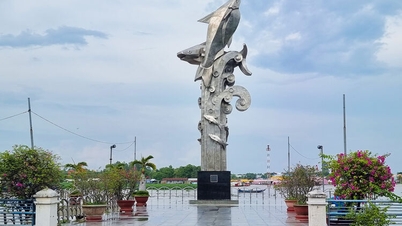
![[Photo] Super harvest moon shines brightly on Mid-Autumn Festival night around the world](https://vphoto.vietnam.vn/thumb/1200x675/vietnam/resource/IMAGE/2025/10/07/1759816565798_1759814567021-jpg.webp)





























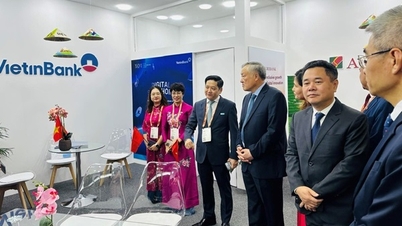














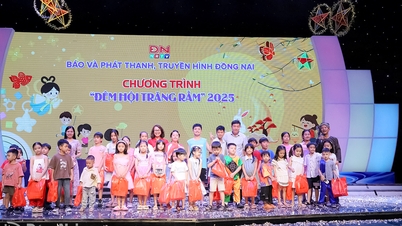

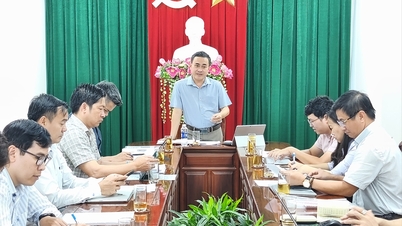


















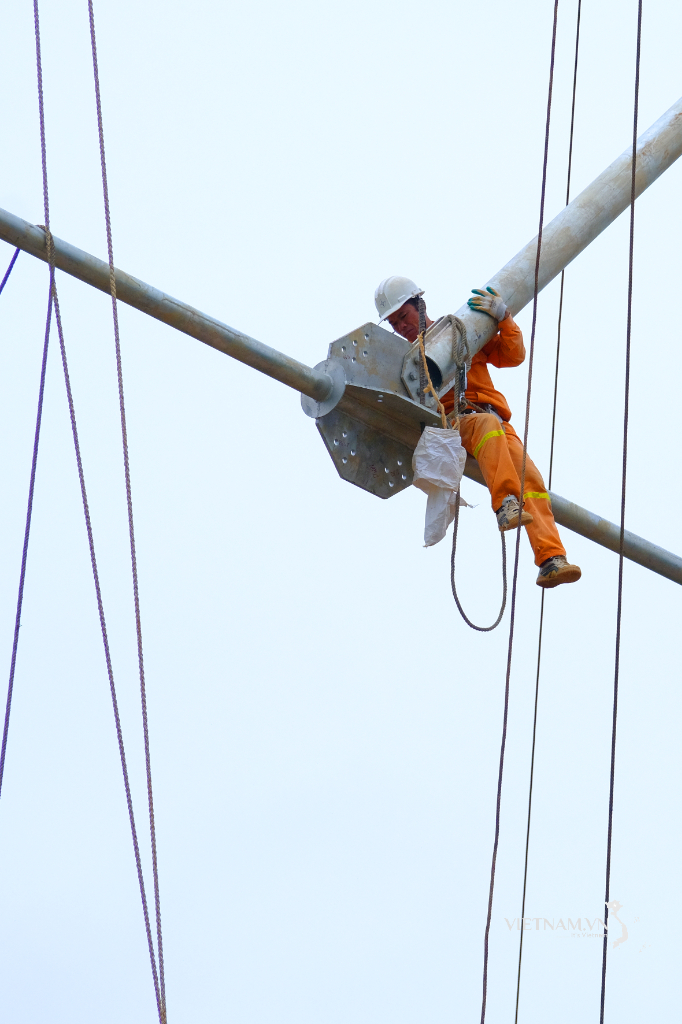

Comment (0)